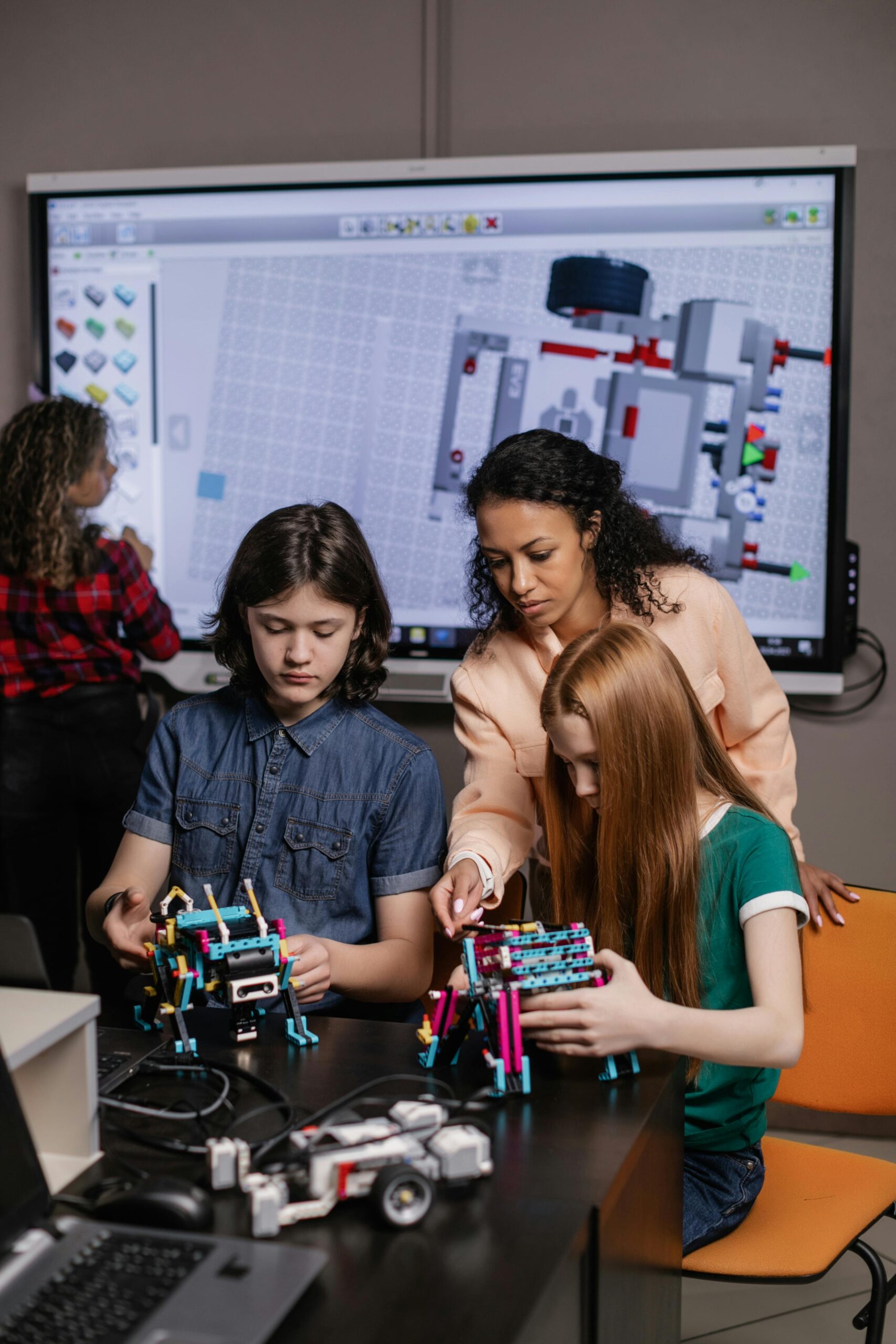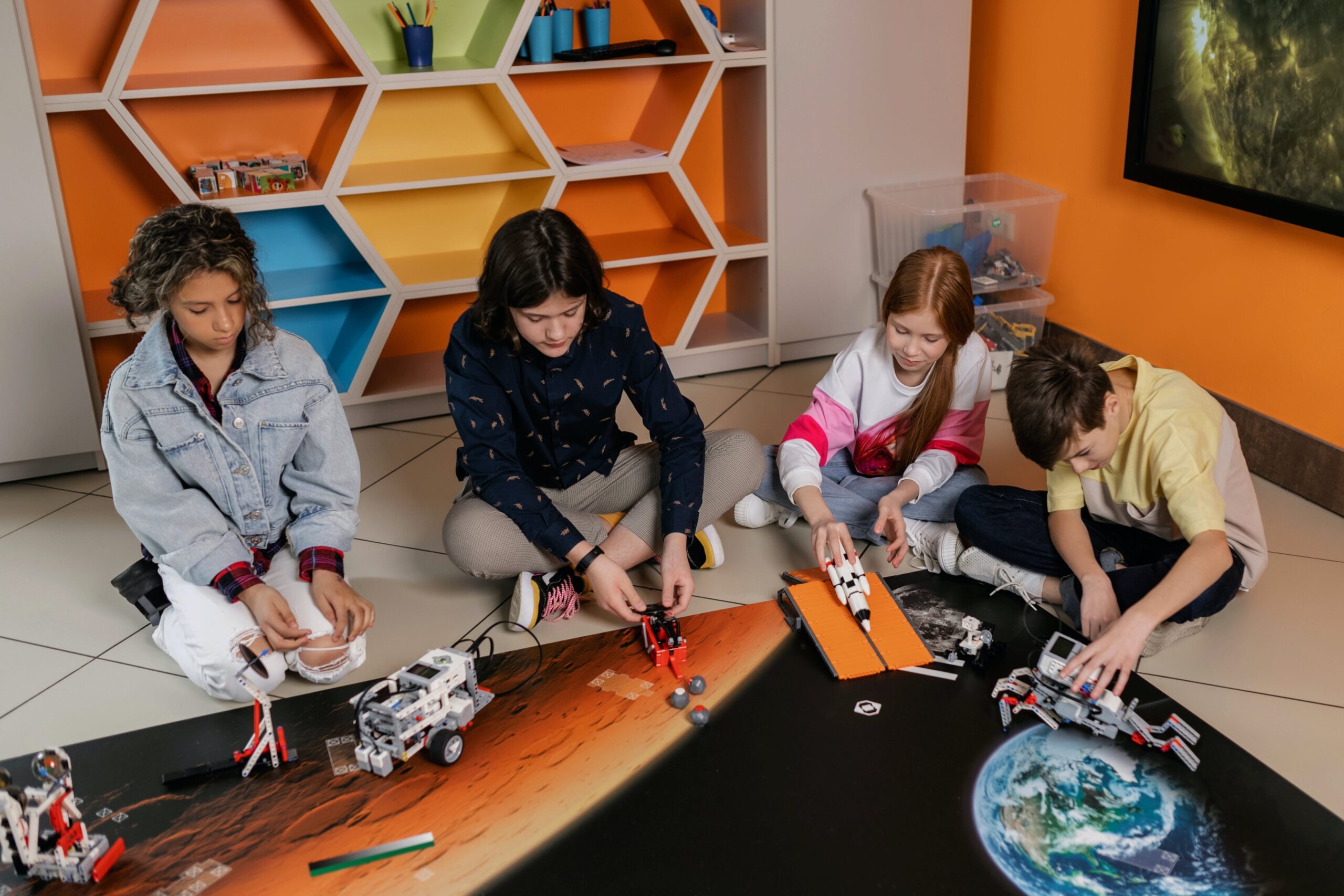Are you interested in exploring the field of robotics and captivated by the world of robots? Be it a tech enthusiast, student, or just a naturally curious person, taking up robotics as a hobby may be a fulfilling and thought-provoking experience. We will walk you through all the necessary stages to get your robotics hobby off to a great start in this post, from learning the fundamentals choosing the appropriate parts to create your first robot, and discovering the world of robotics. So, continue reading to find out how to get started in the area of robotics, whether you have always wanted to build your robotic inventions, or you just want to learn more about this exciting and rapidly developing profession.
Getting your hands dirty and playing with robots is the greatest way to introduce them to the world. Although a stack of unattached motors, sensors, and microcontrollers may initially appear intimidating, we will assist you in locating solutions appropriate for your proficiency level, be it novice, intermediate, or expert.
Basic level: Coding robots
Consider programmable robots as an alternative if you would prefer to learn more about how robots operate before attempting to put one together from the ground up. You may learn the fundamentals of coding and important robotics topics using these robots, including what constitutes a robot and how it differs from other types of devices. The fact that programmable robots come in a wide range of pricing points and capabilities presents one issue. Cubelets, Dash, Finch, Root, RVR, Sphero, and Thymio are some suggestions.
Intermediate level: Kits for robots
Take into consideration a beginner’s kit that comes with all the parts you need, together with a comprehensive manual and example code, if you are new to electronics. Numerous kits are available that enable you to assemble a simple robot, such as a wheeled robot or robotic arm, and then experiment with various behaviors by modifying its programming. Another choice is to modify and enhance robots made by other manufacturers. On websites and forums dedicated to robotics, you may discover finished creations together with lists of parts and instructions.
Advanced level: Robot platforms
There are some suggestions for you if you’re ready to experiment with some sophisticated robot platforms. Working with some of the most sophisticated robot gear and software available requires an understanding of electronics, computers, networking, and operating systems. These are the two choices: TurtleBot and Create 3.
As a platform for developing robots, TurtleBot has a mobile base, a camera, and a 3D sensor, as well as cutting-edge open-source software such as the Robot Operating System (ROS), which is utilized by leading universities and businesses worldwide. The TurtleBot 3 and TurtleBot 4 are two more recent variants that are presently available for purchase. The first TurtleBot was created more than ten years ago.
A robot development platform called Create3 was developed by iRobot. The hardware of the Roomba robotic vacuum—minus the cleaning module—is the foundation of Create 3. It runs ROS 2 and has features including lights, buttons, Wi-Fi, Bluetooth, cliff, and infrared sensors. Python or iRobot’s web-based visual coding application may be used to program the robot. Gazebo, a robot simulator, is another option.
Additional Tips for Getting Started with Robotics
Study up on electronics
Although it is not the most enjoyable aspect of robotics, this is a necessary component. It was mistakenly believed for a time that you could perform robotics without having any knowledge of electronics. However, it was quickly discovered that it was a mistake. To be clear, you do not need to hold an Electronics Engineering degree, but you must possess some fundamental knowledge.
Buy some books
To get off to a solid robotics start, you will need to start building your library as soon as possible. Purchasing the appropriate books will be beneficial. Robot Building for Beginners is a useful place to start.
Start small
This is arguably one of the most significant ideas in the whole article. Stay small! Avoid the temptation to start daydreaming about the potential of a kitchen robot that can also vacuum and dust. You must begin modestly.
Join a competition – I.E. Create a “bot” to perform a task
Once you have built your first robot or two, you will need to start making plans for a robot that can do tasks. For many, one of the main issues is that they never plan for their robot. Specific objectives, such as “I want my robot to patrol the house at night,” greatly increase your motivation and interest in completing the task at hand. Putting your robot in a competition is a fantastic method to do this. Many clubs host yearly competitions and activities.
Choose a Platform
It is important to select the appropriate platform or kit when you are first starting with robotics. Seek out robotics kits intended for novices, as they frequently include pre-assembled parts and thorough instructions. These kits might help you gain confidence and comprehension by making your first tasks more approachable. As you gain expertise, you may always go on to more intricate and personalized tasks. Arduino and Raspberry Pi are well-liked systems for novices because they provide an abundance of online materials and community assistance.
Tools and Equipment
Working with different components by hand is a common task in robotics. It is crucial to have the appropriate tools and equipment on hand to be well-prepared. Purchase a multimeter, screwdrivers, wire cutters, and a decent soldering iron. You will need these tools to assemble and maintain your robots. Good instruments may reduce frustration and increase the efficiency of your job.
Online Resources
The internet is a veritable gold mine of robotics information. Make use of the wealth of internet resources at your disposal. Websites, discussion boards, YouTube channels, and virtual classes are excellent resources for knowledge, guides, and project inspiration. You may find groups of other robotics enthusiasts who are prepared to give assistance and help, as well as step-by-step instructions and troubleshooting guides.
Build Simple Projects
It is best to begin with simple robotics projects if you are a newbie. Building a line-following robot, an obstacle-avoiding robot, or a simple robotic arm are a few examples. These kinds of easy tasks let you put your knowledge to use and get real-world experience. Additionally, they assist you in gaining familiarity with the many systems and parts of robots, preparing you for later, more difficult projects.
Regularly work on your bots.
Work on your robots regularly, especially if you plan to compete! It is difficult to return to a project after weeks away from it. Use that time to consider the plan and the project. Even a brief period before bed can be beneficial. Additionally, record your activities in a regular journal. It is crucial to record your efforts.
Do not be a tightwad
It is not a good thing to be a tightwad or cheap person. Being frugal may save you a little bucks, but the additional time and aggravation it causes will cost you far more. They are not saying that you should not hunt for deals; but if it means unsoldering parts off circuit boards rather than paying $5 to a shop. This is a lesson you had to learn the hard way. It is not an inexpensive hobby, robotics, and sometimes you have to confront reality. Your sanity and time are more valuable.
Try New Things and Adjust
In robotics, testing, and tweaking are just as important as obeying directions. Do not be scared to try new things, take chances, and make mistakes—you will learn from them. Take the opportunity to learn more from obstacles and surprising results that come your way. Hands-on experimenting and tinkering frequently result in creative solutions and original products.
Join Communities for Robotics
In the collaborative area of robotics, enthusiasts possess a strong feeling of community. Getting in touch with people who share your enthusiasm for robotics can be facilitated by joining forums and groups. These platforms provide a forum for idea exchange, experience sharing, advice seeking, and peer learning. Interacting with the robotics community may be energizing and offer insightful information about various facets of the discipline.
Stay Updated
The field of robotics is continuously developing, with new advancements and technology appearing regularly. It is critical to keep up with the most recent developments and trends if you want to remain on the leading edge. Read research papers, keep up with robotics news, and, if you can, go to conferences or webinars. By remaining up to date with the most recent advancements, you can keep learning new things and adjust to the robotics world’s constant change.
Have Fun
Finally, but most importantly, never forget that robotics is a pastime designed to be enjoyed. Allow your curiosity and enthusiasm to guide your endeavors. It is about the excitement of creating, solving problems, and realizing your ideas, not simply about making robots. Accept the trip and relish the feeling of achievement that comes from doing a task successfully. The most important thing is to enjoy yourself while learning about robotics, whether you are doing it for leisure or as a possible profession.
Conclusion
Taking up robotics as a hobby may be an exciting journey full of possibilities for creativity and technological advancement. As you immerse yourself in this dynamic profession, never forget to be patient, curious, and persistent. You may expect fascinating discoveries and creative ideas from your robotics adventure if you have the correct attitude and are dedicated to learning. So, take advantage of this chance and start your robotics journey now!







